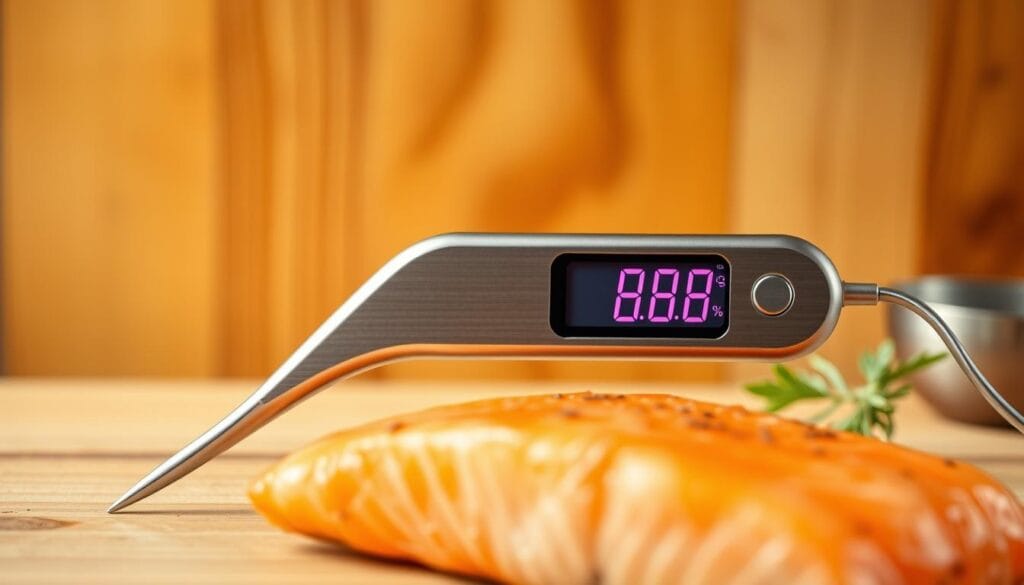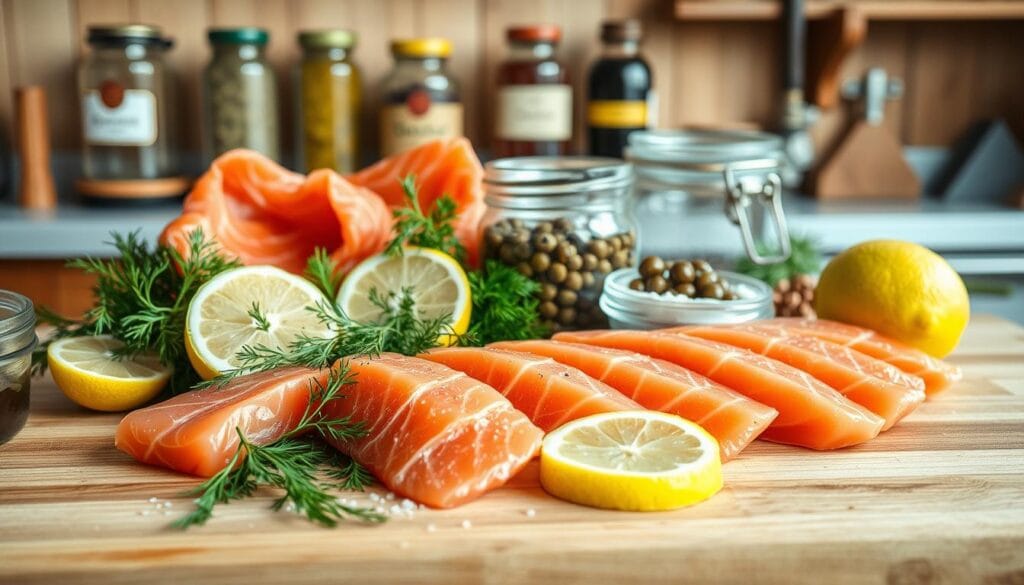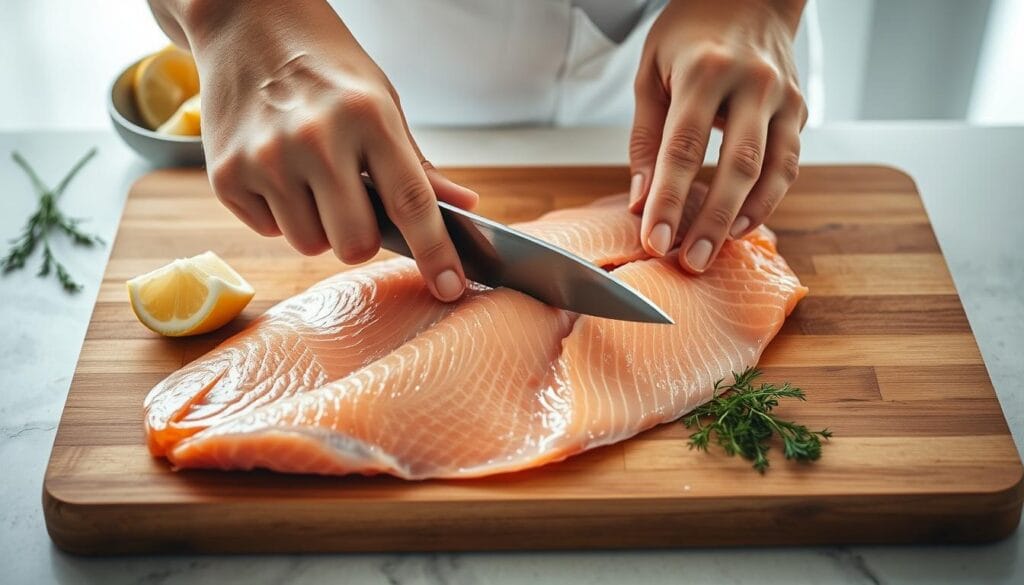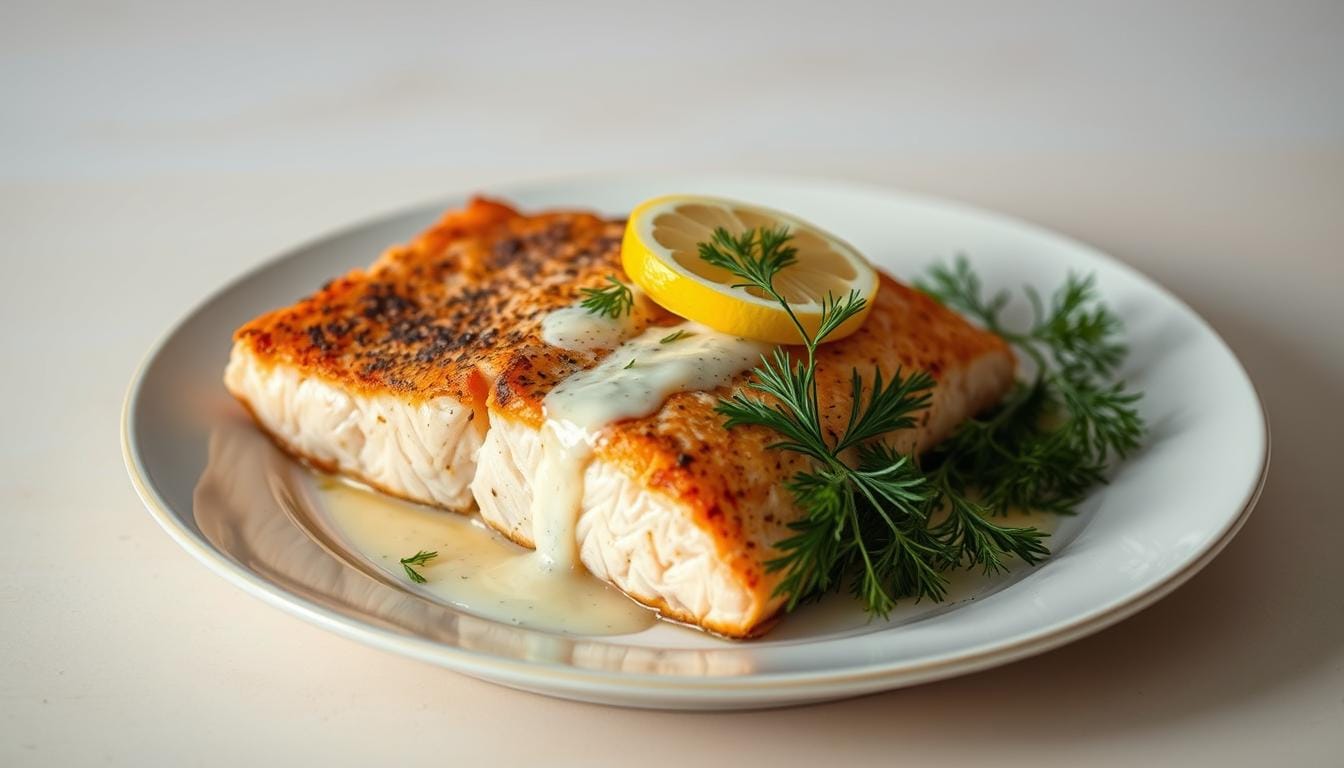Best Salmon Recipe: How to Make a Delicious Meal at Home
There’s something magical about walking into a kitchen filled with the aroma of fresh herbs and golden, flaky fish. Maybe you’ve felt that mix of excitement and doubt—wanting to create a meal that’s both nourishing and impressive, but worried it’ll take hours. Trust me, I’ve been there too. If you’re looking for the best salmon recipe that’s easy, flavorful, and sure to impress, you’re in the right place.
This guide is designed for anyone craving a restaurant-quality dish without the fuss. Imagine pulling a perfectly cooked fillet from the oven in under 30 minutes. It’s not just possible—it’s easier than you think.
Start with fresh, high-quality ingredients. A drizzle of olive oil and a sprinkle of seasoning can transform your dinner. The secret? Letting the oven do most of the work. Preheat it properly, and you’ll lock in moisture while achieving that crisp exterior everyone loves.
Busy weeknights demand simplicity. This method fits seamlessly into hectic schedules, offering a balanced meal packed with omega-3s and flavor. Pair it with roasted veggies or a light salad, and you’ve got a dish that feels special yet effortless.
Key Takeaways
- Create a flavorful, healthy dish in under 30 minutes
- Use fresh ingredients like olive oil for maximum taste
- Proper oven temperature ensures juicy, tender results
- Ideal for quick weeknight dinners or entertaining guests
- Versatile enough to pair with various sides
Introduction to a Delicious Salmon Experience
Picture your fingertips brushing against glistening fish skin, the sizzle of citrus-kissed oil hitting a hot pan. This is how coastal communities in the Pacific Northwest have celebrated fresh catches for generations. Their approach? Letting the fish shine through simple preparations.

Modern kitchens borrow from these traditions while adding precision tools. A digital thermometer transforms guesswork into confidence. Insert it into the thickest part of the fillet – 125°F gives you tender, juicy flesh every time.
Timing matters as much as technique. Bake too long, and you lose moisture. Pull it early, and you keep that melt-in-your-mouth texture. One chef from Seattle’s Pike Place Market puts it best: “Fish tells you when it’s ready – listen with your eyes and tools.”
Three elements make this way of cooking foolproof:
- Quality ingredients (wild-caught if possible)
- Even heat distribution
- Resting time after cooking
Whether you’re hosting friends or fueling a weeknight dinner, this method adapts. The process becomes part of the joy – aromatic herbs, golden crusts, and the satisfaction of nailing perfect doneness.
Ingredients That Make the Best Salmon Recipe
The foundation of any memorable dish lies in its components. Start with a fresh, thick-cut fillet—its vibrant color and firm texture signal quality. Wild-caught options often deliver richer flavor, but responsibly farmed works too. Pair it with pantry staples that amplify natural taste without overpowering.

Essential Ingredients and Their Ratios
Balance sweet and savory with 1 tablespoon brown sugar mixed with 1 teaspoon smoked paprika. This combo creates a caramelized crust while adding depth. A half-teaspoon each of salt and garlic powder enhances the fish’s natural oils. Drizzle 2 tablespoons olive oil to lock in moisture during baking.
Chef Elena Martinez, known for her coastal cuisine, notes: “Great meals hinge on precision—measure spices like you’re crafting jewelry.” Stick to these ratios for consistent results. The sugar isn’t just for sweetness—it helps form that golden exterior everyone craves.
Substitutions and Variations for Flavor
No brown sugar? Swap in honey or maple syrup for a liquid sweetener. If garlic powder feels too sharp, try minced fresh cloves instead. Smoked paprika can replace regular for a bolder kick, while chili powder adds heat for adventurous palates.
Vegetable oil works if olive oil isn’t handy, but you’ll lose some fruitiness. For gluten-free or low-sodium diets, reduce salt and double-check spice blends. Always taste your mix before applying—adjust until it sings on your tongue.
Preparing Your Salmon Filet for Baking
A flawless bake begins with careful selection and precise prep. Start by examining your fish—look for firm flesh that springs back when pressed. Avoid any grayish discoloration or strong odors, which signal aging.

Choosing the Perfect Salmon
Wild-caught varieties often boast richer flavor due to their natural diet. Check for vibrant pink-orange hues and visible marbling. If farmed, verify sustainable certifications on the packaging.
| Attribute | Wild-Caught | Farmed |
|---|---|---|
| Flavor Profile | Robust, earthy | Milder, buttery |
| Texture | Firmer | Softer |
| Availability | Seasonal | Year-round |
Prep Techniques for Even Cooking
Run your fingers along the fillet to locate pin bones. Use clean tweezers or the tip of a fork to remove them gently. Pat the surface dry with paper towels—moisture steams instead of searing.
Pro tip: Line your baking sheet with parchment to prevent sticking. Preheat your oven to 400°F while brushing the fish with olive oil. This creates a golden crust while locking in juices.
Space pieces evenly on the tray. Crowding leads to uneven heat distribution. For thicker cuts, score the skin lightly to help heat penetrate uniformly.
Mastering the Best Salmon Recipe: Step-by-Step Guide
Your kitchen timer beeps as golden-brown edges form on the fillet. This moment hinges on three elements: precise seasoning, proper heat, and timing. Let’s break down each phase to ensure your results rival professional kitchens.
Marinating and Seasoning Tips
Combine 1 tsp smoked paprika with ½ tsp garlic powder and ¼ tsp salt. Add a pinch of ground black pepper for depth. Rub this mix onto the fish, letting it sit for 10 minutes. The spices penetrate the flesh, creating layers of flavor without overpowering.
Pro tip: For extra moisture, brush with olive oil before applying dry rubs. Avoid acidic marinades if baking immediately—they can alter texture during cooking.
Preheat, Brush, and Bake: The Essential Steps
Set your oven to 400°F while prepping the fish. This ensures even heat distribution from the start. Place the seasoned fillet on a parchment-lined tray, skin-side down. Bake for 12-15 minutes, depending on thickness.
Insert a thermometer into the thickest part. Remove at 125°F—the residual heat will carry it to 130°F as it rests. Overcooking dries out the flesh, so watch the time closely.
Chef-approved method:
- Prep seasoning mix in advance
- Always preheat your oven
- Check temperature early
Follow these steps, and you’ll achieve flaky, moist results every time. Pair with sides after a 5-minute rest for optimal juiciness.
Baking Techniques for Flaky and Moist Salmon
Golden light spills across your counter as you slide the tray into the oven. This moment determines whether your meal becomes a triumph or a lesson. Precision here makes all the difference.
Optimal Oven Temperatures and Times
Set your appliance between 375°F and 400°F for balanced results. Higher heats (425°F-450°F) create crispier edges but require closer monitoring. Thinner cuts need 10-12 minutes, while thicker portions may take 15-18.
Metal pans conduct heat faster than glass. Line them with parchment paper to prevent sticking without sacrificing browning. Foil traps steam, softening the crust—use it only for delicate marinades.
How to Avoid Overcooking and Dryness
Insert a fork at the 10-minute mark. If flesh flakes easily but still glistens, it’s done. Remove from heat immediately—residual cooking adds 5°F. Aim for an internal temperature of 125°F for medium-rare or 130°F for medium.
Resting matters. Let the fish sit 3-5 minutes before serving. This allows juices to redistribute, preventing a dry texture. If edges appear opaque while the center remains translucent, reduce heat next time.
| Oven Temp | Baking Time | Result |
|---|---|---|
| 375°F | 15-18 min | Evenly cooked, tender |
| 425°F | 12-14 min | Crispy crust, moist center |
Ground black pepper adds depth without overpowering. Combine it with citrus zest for brightness. Remember: every oven varies. Start checking early and adjust future batches accordingly.
Enhancing Flavor with Marinades and Glazes
Transform ordinary fillets into vibrant centerpieces with marinades that dance on the palate. A well-crafted glaze acts like edible jewelry, elevating both appearance and taste through balanced acidity and aroma.
Lemon Butter and Garlic-Dijon Marinades
Whisk ¼ cup melted butter with 2 tbsp fresh lemon juice for a bright, creamy base. Add 3 minced garlic cloves and 1 tsp Dijon mustard—this combo clings to flesh while adding tangy depth. Brush generously over fish 15 minutes before cooking.
“Great marinades work like a handshake—strong enough to make an impression, gentle enough not to overwhelm.”
Balancing Sweetness with Spices
Counter citrus zing with ½ tsp honey or maple syrup. For heat lovers, add a pinch of cayenne to the Dijon mix. Fresh parsley or dill sprinkled post-bake adds herbal freshness without competing flavors.
| Marinade Type | Prep Time | Flavor Notes |
|---|---|---|
| Lemon Butter | 10 minutes | Citrus-forward, creamy finish |
| Garlic-Dijon | 8 minutes | Pungent, peppery kick |
Let mixtures sit at room temperature for 5 minutes before applying. This allows flavors to meld while prepping your baking tray. For thicker glazes, simmer 1 tbsp marinade with cornstarch until glossy.
Complementary Sides to Elevate Your Salmon Dinner
The secret to a memorable plate lies in harmony—each element enhancing the others without competing. Pairing your main dish with thoughtful accompaniments turns a simple meal into an experience. Let’s explore combinations that balance textures and flavors while keeping prep work manageable.
Fresh Salads and Rice Options
Bright, crunchy salads cut through the richness of baked fish effortlessly. Try arugula tossed with lemon vinaigrette and shaved Parmesan—it takes 5 minutes to assemble. For heartier meals, jasmine rice absorbs pan juices beautifully. Cook it while your fillet bakes to save time.
Vegetable Pairings for a Balanced Meal
Roasted asparagus with garlic or honey-glazed carrots add vibrant color and nutrients. Quick-roasting veggies like zucchini or Brussels sprouts cook alongside your main dish. Pro tip: Toss them in olive oil and seasoning before popping into the oven.
| Side Dish | Prep Time | Flavor Notes |
|---|---|---|
| Citrus Quinoa Salad | 12 minutes | Zesty, nutty |
| Garlic Butter Green Beans | 8 minutes | Savory, crisp-tender |
Three tips for synchronized cooking:
- Start rice or grains first—they stay warm
- Prep salad dressings during oven preheating
- Roast veggies on the same tray as fish (space permitting)
These pairings transform weeknight dinners into restaurant-worthy spreads. Mix and match based on seasonal produce for endless variety.
Storing, Reheating, and Using Leftover Salmon
That last perfect bite deserves proper care. Leftovers maintain their quality when handled with attention to temperature and timing. Let’s ensure your efforts yield delicious results even days later.
Proper Storage Tips for Freshness
Cool cooked fish to room temperature within two hours. Transfer it to an airtight container, separating larger pieces with parchment. Refrigerate for up to three days—any longer risks texture changes.
Freeze portions in heavy-duty bags for one month. Label with dates to track freshness. Thaw overnight in the fridge before reheating.
Creative Ideas for Leftover Salmon
Flake chilled fillets into a creamy pasta sauce or mix with mashed potatoes for croquettes. For quick lunches, toss chunks into grain bowls or fold into omelets with fresh herbs.
Chef’s hack: Combine flaked fish with breadcrumbs, minced garlic, and melted butter to form patties. Pan-fry until golden for crispy salmon cakes. Serve over greens with lemon dressing.
Reheat gently in a 275°F oven with a pat of butter on top. Cover loosely with foil to retain moisture. Use a fork to check if the thickest part reaches 145°F—this prevents overcooking.
Nutritional Benefits and Health Perks of Salmon
Beyond its succulent flavor lies a powerhouse of essential nutrients. This fish delivers a unique combination of heart-healthy fats and muscle-building compounds that support overall wellness. Let’s break down what makes it a smart choice for health-conscious cooks.
Rich Sources of Omega-3 Fatty Acids and Protein
A 3-ounce serving provides over 1,500 mg of omega-3s—more than three days’ worth for most adults. These fats reduce inflammation and support brain health. Pair this with 22 grams of high-quality protein per serving, and you’ve got a meal that keeps you full and energized.
Studies show proper cooking methods preserve these nutrients. Baking at 400°F retains 85% of omega-3s compared to frying. A squeeze of lemon juice boosts iron absorption, while parsley adds vitamin C for immune support.
| Nutrient | Wild (3 oz) | Farmed (3 oz) |
|---|---|---|
| Omega-3s | 1,800 mg | 1,500 mg |
| Vitamin D | 100% DV | 75% DV |
| Protein | 22g | 20g |
Wild vs. Farmed: What Science Says
Wild-caught varieties typically have higher omega-3 levels due to their natural diet. Farmed options often contain more saturated fat but remain rich in selenium and B vitamins. Both choices offer substantial health benefits when prepared properly.
Research from the Journal of Nutrition notes: “Regular consumption supports cardiovascular health regardless of source—focus on freshness and cooking technique.” Opt for simple preparations with garlic or herbs to maximize nutrient retention.
Including this fish in your diet 2-3 times weekly provides a sustainable way to meet nutritional goals. Pair it with leafy greens or whole grains for a meal that fuels your body and satisfies your taste buds.
Conclusion
Gathering around the table with a flawless main dish becomes effortless with these methods. Preheat your oven, season generously, and let quality ingredients work their magic. That golden crust and tender interior? They’re within reach every time you follow the temperature guidelines.
Fresh herbs and melted butter transform weeknight dinners into memorable meals. Pairing simple techniques with proper resting time ensures perfectly cooked results—no chef’s jacket required. Experiment with citrus glazes or spice blends to make each meal uniquely yours.
This approach delivers more than great taste. You’ll gain a versatile skill for hosting or quick family dinners. Share your creations online using #FlavorfulFillets—we’d love to see your twists on this classic.
Ready to simplify your kitchen routine? Grab that baking sheet and let aromas fill your home. With practice, you’ll master restaurant-quality dishes faster than takeout arrives.
FAQ
Can I substitute olive oil with another fat?
How do I know if the fillet is fresh?
What’s the ideal internal temperature?
How long should I marinate the fillet?
Can leftovers be frozen?
What sides pair well with this dish?
Why is wild-caught often recommended?
How do I prevent sticking on the pan?
Did you like this recipe? Share your thoughts!
There are no reviews yet. Be the first one to write one.

